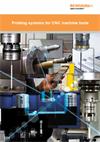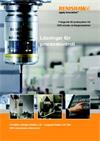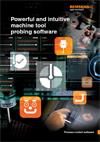Probnings- och verktygsmätningssystem för verktygsmaskiner
Renishaw erbjuder ett omfattande sortiment med probnings- och verktygsmätningssystem för CNC-verktygsmaskiner. Våra automatiserade system som konstruerats för att förbättra bearbetningens noggrannhet och effektivitet, erbjuder märkbara kostnadsbesparingar och kvalitetsförbättringar.
Probning av verktygsmaskiner och verktygsmätning på maskinen är en etablerad bästa arbetspraxis inom bearbetningsindustrin. Manuella inställnings- och inspektionsverktyg och komponenter kan försämra bearbetningens precision och lönsamhet. Våra probnings- och verktygsinställningssystem hjälper tillverkare att reducera kassationerna, undvika dyra maskinstopp och förbättra komponenternas kvalitet.
Våra lösningar möjliggör automatiserad komponentinställning, mätning under arbetscykeln, verktygsinställning och detektering av verktygsbrott. När vår teknologi kombineras med automatiska uppdateringar av verktygsförskjutning, kan du lita på din maskin, reducera inställningstiderna och förbättra processstyrningen.
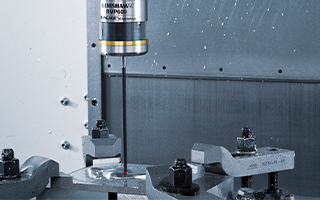
Utforska vårt utbud av kontakt- och skanningsprober för inställning och kontroll av arbetsstycken.
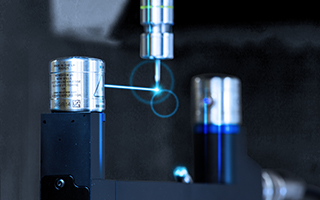
Upptäck vårt system för verktygsinställning och detektering av verktygsbrott för alla typer och storlekar av CNC-verktygsmaskiner.
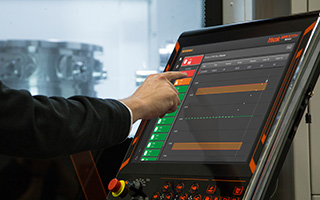
Maximera din hårdvara för probning och verktygsinställning med vår flexibla macro och PC-baserade programvara och appar.
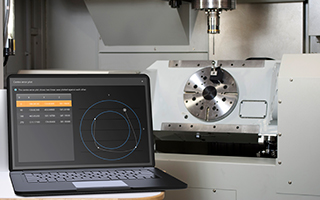
Upptäck våra lösningar för verktygsmaskinunderhåll och hälsostillståndsövervakning för tillförlitlig, produktiv bearbetning.
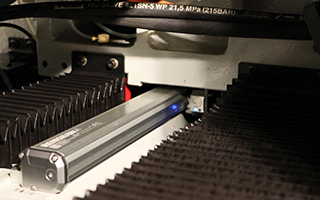
Konstruerad för att motstå krävande miljöer, hitta din kapslade optiska pulsgivarlösning för applikationer med verktygsmaskiner.
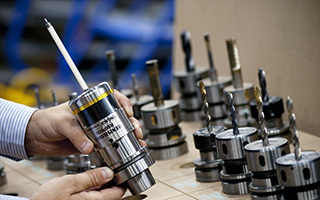
Besök vårt tekniska supportbibliotek för hjälp med installation och utbildning för hårdvaru- och programvaruprodukter för verktygsmaskiner.
Vad är verktygsmaskinsprobning och verktygsmätning?
Verktygsmaskinsprobning och verktygsmätning är en process för att mäta position, mått och egenskaper hos ett arbetsstycke eller skärverktyg på en verktygsmaskin. Detta säkerställer att du uppfyller nödvändiga specifikationer och toleranser före och under bearbetningsprocessen.
Noggrann mätning av arbetsstycken och verktyg på en CNC-maskin hjälper till att uppnå tillförlitliga och jämna bearbetningsresultat, öka produktiviteten och minimera risken för dyra fel.
- Verktygsmaskinprober för inställning och inspektion av arbetsstycken, samlar in data om ett arbetsstyckes form, storlek och position. Använd för att noga mäta egenskaper hos bearbetade detaljer och erbjuda snabb detaljinställning.
- System för verktygsinställning och detektering av verktygsbrott mäter själva skärverktyget, snarare än arbetsstycket. De etablerar en referenspunkt på skärverktyget och kontrollerar avseende slitage eller brott.
Hur du beställer
För att köpa, skicka in ett kontaktformulär för att prata med ditt lokala försäljningsteam.
Du kan även köpa ett urval av probsystem och tillbehör för verktygsmaskiner från vår webshop när det passar dig.
Fördelar med verktygsmaskinsprobning och verktygsmätning
Mätning av arbetsstycken och verktyg kan utföras före, under och efter bearbetningsmoment. Genom att utföra denna typ av mätning kan du undvika dyra maskinstillestånd och kassering av komponenter. På så sätt kan du bättre lägga tid och pengar i produktiv bearbetning.
- Öka produktiviteten med dina befintliga tillgångar. Skjut upp kapitalutgifter, minska kostnaderna för underleverantörer och övertid och utöka din verksamhet.
- Öka automationen i dina inställnings- och mätningsprocesser. Minska antalet mänskliga ingrepp och ge personalen proaktiva tekniska uppgifter. Ge dina verktygsmaskiner de intelligenta funktioner de behöver för att kunna besluta på egen hand, vilket möjliggör längre perioder med automatisk körning.
- Undvik omarbetning och kassationer. Probning av arbetsstycken i bearbetningsprocessens viktigaste steg låter dig justera processparametrarna. Detta gör detaljerna mer homogena, ökar processkapaciteten och reducerar avvikelserna. Hjälper dig att sänka enhetskostnader och korta ledtiderna.
- Ha rätt kapacitet för marknadens behov. Automatiserade inställningar med hjälp av prober låter dig ställa in komplexa komponenter, vilket eliminerar behovet av dyra precisionsfixturer. På så sätt kan du omgående svara på kundernas nya krav genom att snabbt introducera nya processer.
Använd vår fördelskalkylator för att se hur snabbt din investering lönar sig.
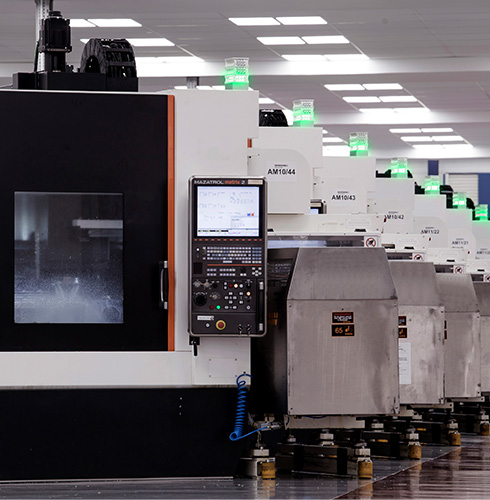
”Vi tittade på många olika företag för att leverera de maskinprobningssystem som vi behövde. Vi valde bara ett företag som vi kände oss bekväma med och som passar vår konstruktionskultur perfekt. Det företaget var Renishaw. De har bra teknisk support, deras tekniker är mycket kunniga och jag skulle beskriva deras utrustning som förstklassig.
Tigercat Industries Inc. (Kanada)
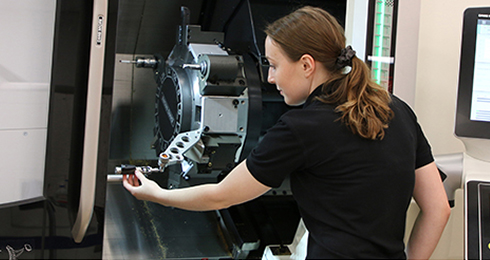
Säkerställ att detaljerna blir ”rätt första gången”
En felinställd maskin inte kan tillverka tillräckligt exakta delar. Regelbundet verktygsmaskinunderhåll och hälsostillståndsövervakning är en nödvändighet för tillförlitlig högprecisionsbearbetning.
Dessa typer av förebyggande åtgärder hjälper till att minska källor till variationer. De utför en solid grund för processtyrningen och säkerställer en jämn och effektiv bearbetningsprocess.
Osäker på vilket system du behöver?
Använd vår probväljare för att identifiera vilket system som bäst passar för din verktygsmaskininställning.
Vår kompetens inom CNC-bearbetning inom industriell tillverkning
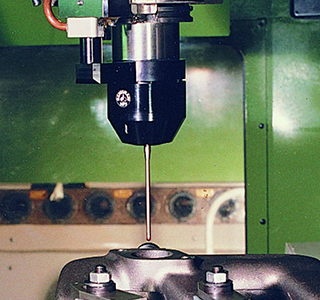
Genom hela vår historia har vi kontinuerligt satsat på teknisk utveckling och innovation. När vårt företag grundades 1973, var kontaktverktygsinställaren vår första produkt. Denna innovativa produkt revolutionerade kapaciteten hos koordinatmätmaskiner (CMM), vilket möjliggjorde högprecisionsmätning av bearbetade komponenter.
Under mitten av 1970-talet, introducerade Renishaw den första proben som var avsedd för tillämpningar med metallskärning. På så sätt blev det möjligt med inställning och inspektion under cykeln.
Idag erbjuder vårt prob- och verktygsmätningssystem märkbara förbättringar inom kvalitet och prestanda genom ett brett spektrum av tillämpningar och branscher. Oavsett var i världen du befinner dig, vilken maskin, tillämpning eller problem du har, finns det ett Renishaw-system som kan förbättra din tillverkningsprocess.
Behöver du en anpassad lösning?
Vi har ett särskilt team för anpassade produkter som erbjuder kvalificerad rådgivning och konstruktionstjänster för verktygsmaskinprodukter. Med enastående erfarenheter inom anpassad design är vi övertygade om att vi kan uppfylla dina behov, oavsett typen av utmaningar.
Vårt utbud inkluderar:
- Skräddarsydda konstruktioner och produktionslösningar, med allt från specialmätspetsar till kompletta probnings- och verktygsmätningssystem.
- Maskinundersökningar för att hitta och konstruera den bästa lösningen för alla individuella krav.
- Enkel integrering av Renishaws standard- och anpassade produkter i din maskin.
- Utmärkta kostnader och leveranstider för anpassade produkter.
- Stöd för både nya maskinkonstruktioner och krav på eftermontering.
Oavsett dina behov kommer vårt team för anpassade produkter att hjälpa dig. Kontakta oss direkt.
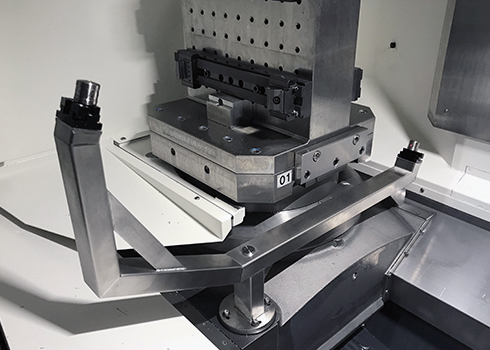
Utnyttja dina verktygsmaskindata till deras fulla potential

Upptäck hur vår kraftfulla dataplattform för smart tillverkning, Renishaw Central, kan optimera din bearbetningsprocess och öka produktiviteten.
Kontakta vårt försäljningsteam idag
Kontakta ditt lokala kontor för att få mer information och prata med någon av våra experter.
